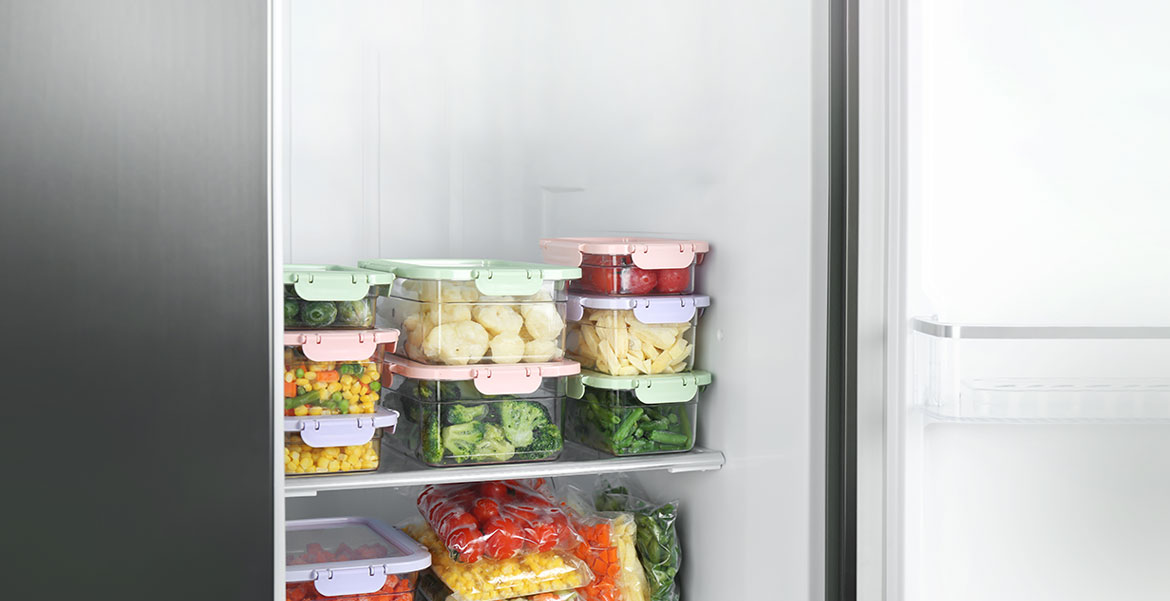How to preserve food safely at home!
Food preservation refers to the processes you use to prepare food for safe, long-term storage. Preservation methods help in inhibiting the bacterial growth and other types of spoilage, meaning the food is safe and satisfying to eat in the future.
The main aim of food preservation is to arrest or slow down the activity of microorganisms in the food. Few of the methods of preserving food as we all know are freezing, heating/ boiling, fermenting, removing moisture, drying herbs and spices etc.
Few healthy methods that are usually employed at home:
● Chilling: Storing food at a low temperature is the simplest, and often safest, way to store many types of food, as the food you plan to chill usually requires minimal preparation or it’s already done for you. Fridges preserve the quality and safety of food because the cold slows bacterial growth and minimizes spoilage. Depending on the type of food, it can last between a few days and a few weeks in the fridge before the texture and taste deteriorate.
Tip: Set your fridge to a temperature between 1°C and 4°C. The law requires you to store food for commercial use under 8°C.
● Freezing: Freezing uses very cold temperatures to stop microbial activity during storage. In addition to the cold temperature affecting microbial activity, the water in foods is turned to ice and is unavailable for microorganisms to use in their metabolic activities. Freezing does not kill most microorganisms in foods but puts them into a state of suspended growth and activity.
● Fermentation: Fermentation is the controlled decay of material using special bacteria which results in a more desirable product. Technically, fermentation is the biochemical conversion of sugars, starches, or carbohydrates, into alcohol, and organic acids, by bacteria and enzymes.
The desirable bacteria added, causes less deterioration of the food by inhibiting the growth of the spoiling types of bacteria. Some fermentation processes lower the pH of foods, preventing harmful microorganisms from living with too acidic an environment. Controlled fermentation processes encourage the growth of good bacteria which starves, or fights off, the bad microbes. Depending on what is fermented, or the manner of fermentation, foods can remain consumable for years!
● Dehydration: Drying or dehydrating food removes enough water to preserve through lowered water activity. Bacteria may survive dehydrating of fresh food, but without enough water available during storage, they cannot multiply and cause problems. Some will even die off under this condition.
How to preserve food by drying:
● Low humidity. Low humidity allows moisture to move from the food to the air.
● A source of low heat. The warm temperature allows the moisture to evaporate.
● Air circulation. Air currents speed up drying.
Few methods employed at home to dry food are oven drying, sun drying, microwave drying.
Few common kitchen ingredients that can help in preserving food for long-
● Lemon juice- the citric acid present in the lemon is a natural antibacterial, and helps preserve the flavor, color and taste of your recipes. Lemon juice also prevents fresh fruit and vegetables from browning. This would work well to preserve fruits and veggies.
● Honey- Did you know that can never be spoiled! As long as it is in its pure form, a range of factors including its unique acidity and ability to suck in moisture. Its high concentration of sugar draws out moisture, which inhibits the growth of yeast and other strains of bacteria, such as staphylococcus aureus. The antioxidants in honey have also been shown to slow down the browning of fresh fruit and vegetables. It is mainly suitable for increasing the shelf life of fruits and veggies.
● Garlic- Garlic has antiviral properties that help in fighting bacteria, both in your body and food. Tossing a clove of garlic or some minced garlic in your soup, dressing, dip or any other dish will help keep harmful bacteria at bay and will let the food stay fresh for longer.
● Vinegar- Vinegar is made from fermentation of sugar and water solutions and it acts as an effective natural preservative. The acetic acid present in vinegar kills microbes and inhibits food spoilage. Adding common vinegar in your food can not only preserve foods but also help enhance their taste.
Tips:
How to store greens/ herbs- For herbs, leafy greens, asparagus, and any other vegetable with a stem, you can make them last longer by cutting their stems (as you would with a bouquet of flowers) and placing them in a glass jar filled with 1 inch of filtered water. Place your produce stem down, and use a reusable plastic bag to cover the top of the veggie. Refrigerate.
How to increase the shelf life of bananas? When you buy a bunch of bananas, take a small piece of leftover plastic wrap and tie it around the bananas stems. Bananas release ethylene gas as they ripen, and the plastic wrap helps contain the gas, which slows down the ripening process.
How to test if the eggs are fresh? Place an egg in a bowl of water. Older eggs will float because a large pocket of air forms in the base, but fresh eggs will sink. This is one of the simplest ways to test for freshness. An egg will immediately smell bad if it is off.
Few common mistakes that we tend to do while storing food at home:
● Improper storage of veggies- we understand that after grocery shopping you probably return back home tired but make sure you do take some time out and store your veggies properly and not just keep as it as In the plastic bags.
Veggies like kale and spinach should be rinsed, dried completely and stored in another container or unsealed ziploc bag with a paper towel to absorb moisture.
Carrots, beets, turnips etc could have a lot of mud particles in them, make sure you clean them well and then refrigerate them. On the other hand, mushrooms, which are technically not vegetables, should be repackaged in a paper bag.
● Storing whatever you want, wherever you want in the fridge- Besides making sure the fridge isn’t filled to the brim with food, we should also avoid just putting food wherever there’s space. Random placement of food can lead to food waste and early spoilage, so it’s important to follow some rules to make sure our food lasts as long as possible.
● Place ready-to-eat or shorter shelf life items like yoghurt and cheese on the top shelf and meats on the lower shelves if you’re not intent on freezing them. A general hygiene tip is to place all meats on a tray or at least a paper towel to prevent any juices from leaking and dripping onto other food.
● Keeping Fresh Foods Too Long- This is one of the most common mistakes: buying too much fresh produce and meats and expecting them to last for weeks in the fridge. In most cases, that just isn’t feasible. There are exceptions, like apples and celery, for instance. But in many cases, a week is too long and you should instead aim to eat the most perishable items within two or three days.
References:
https://www.highspeedtraining.co.uk/hub/food-preservation-methods/
https://foodinsight.org/preserving-food-safely-is-more-science-than-art/
https://extension.umn.edu/preserving-and-preparing/drying-food
Tags: Food preservation, methods, chilling, frying, drying, heating/ boiling, fermenting, removing moisture, drying herbs and spices, Low humidity, Air circulation, Lemon juice, citric acid, Honey, staphylococcus aureus, Garlic, Vinegar, fermentation, How to store greens, herbs, How to increase the shelf life of bananas, How to test if the eggs are fresh.









